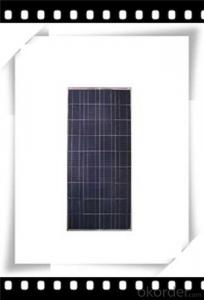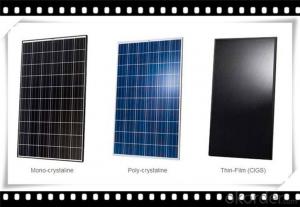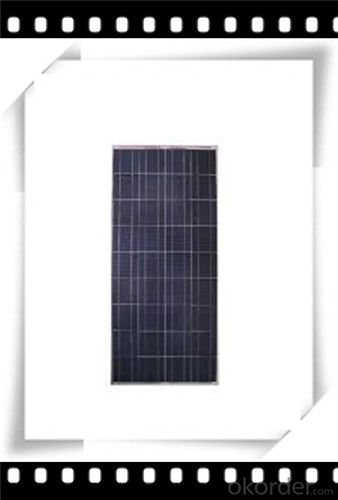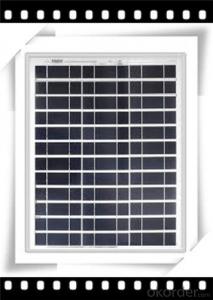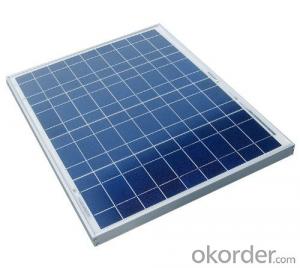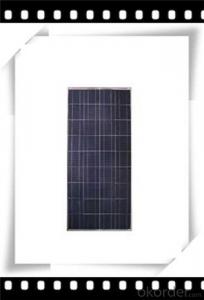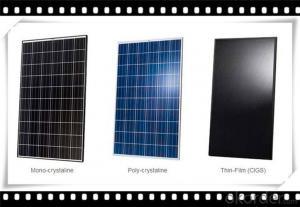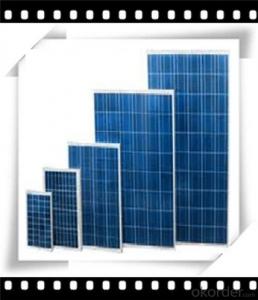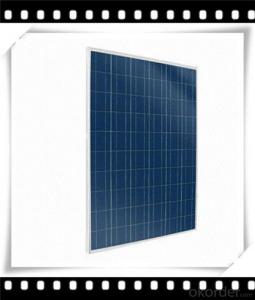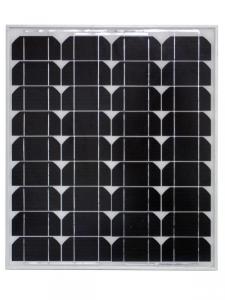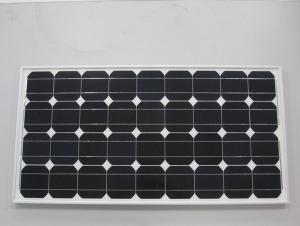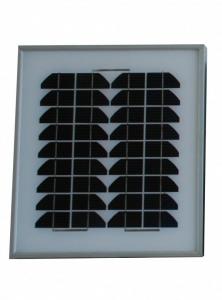4.5w Poly Solar Panel Mini Solar Panel Hot Selling Solar Panel CNBM - Price of Solar Panels Over Time
- Loading Port:
- Qingdao
- Payment Terms:
- TT OR LC
- Min Order Qty:
- 10 set
- Supply Capability:
- 300000 set/month
OKorder Service Pledge
OKorder Financial Service
You Might Also Like
Polycrystalline Solar Modules
CNBM offers a range of small, medium and large polycrystalline solar modules, designed for a range of requirements.
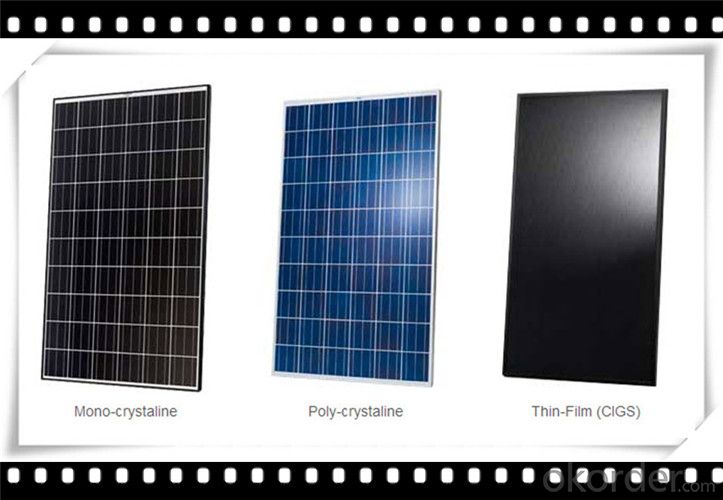
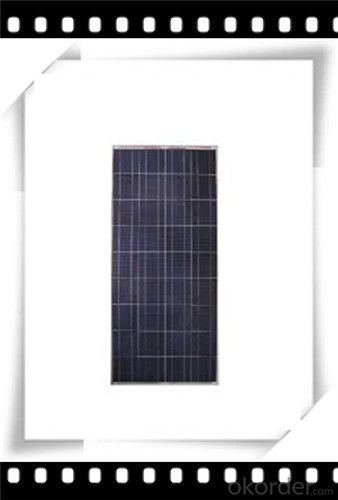
Specifications:
+/-3% |
Polycrystalline silicon solar cells (156 x 156mm) |
60 (10 x 6) |
1650 x 990 x 40 |
25.5 |
Limits:
Operating Temperature | -40~+85? |
Storage Temperature | -40~+85? |
Maximum System Voltage | 1000 VDC max. |
Hail Impact | Diameter of 28mm with impact speed |
Temperature and Coefficients:
NOCT | 48C+/-2? |
Voltage temperature coefficient (%/K) | -0.35 |
Current temperature coefficient (%/K) | 0.05 |
Power temperature coefficient (%/K) | -0.45 |
Characteristics:
Model: | SGM-200P | SGM-210P | SGM-220P |
Max-power voltage Vmp (V) | 29.2 | 29.4 | 29.41 |
Max-power current Imp (A) | 6.85 | 7.14 | 7.48 |
Open-circuit voltage Voc (V) | 36.5 | 36.69 | 36.9 |
Short-Circuit Current Isc (A) | 7.28 | 7.6 | 7.93 |
Max-power Pm(W) | 200 | 210 | 220 |
Model: | SGM-230P |
Max-power voltage Vmp (V) | 29.8 |
Max-power current Imp (A) | 7.72 |
Open-circuit voltage Voc (V) | 37.31 |
Short-Circuit Current Isc (A) | 8.19 |
Max-power Pm(W) | 230 |
STC: Irradiance 1000W/m2, module temperature 25?, AM-=1.5
Poly Crystalline Solar Panels Specifications Range
Maximum Power (Pm) | Dimension | Weight | Operating Voltage (Vmp) | Operating Current (Imp) | Open Circuit Voltage (Voc) | Short Circuit Current (Isc) |
0.45W | 140x80x10mm | 0.08kg | 3.3V | 150mA | 4.6V | 160mA |
1.0W | 162x140x10mm | 0.16kg | 7.5V | 150mA | 10.3V | 160mA |
4.5W | 269x251x23mm | 0.8kg | 16.5V | 0.27A | 20.5V | 0.3A |
10W | 420.1×268.9×22.6mm | 1.92kg | 17.5V | 0.58A | 20.5V | 0.6A |
20W | 425x502x50mm | 3.0kg | 16.8V | 1.19A | 21.0V | 1.29A |
30W | 593x502x22.6mm | 3.9kg | 16.8V | 1.78A | 21.0V | 1.94A |
40W | 655x537x50mm | 5.75kg | 17.3V | 2.31A | 22.1V | 2.54A |
50W | 839x537x50mm | 6.0kg | 17.5V | 2.9A | 21.8V | 3.17A |
65W | 1111x502x50mm | 7.2kg | 17.6V | 3.69A | 22.1V | 3.99A |
80W | 1204x537x50mm | 7.7kg | 17.6V | 4.55A | 22.1V | 4.8A |
- Q: Can solar panels be installed on residential complexes or apartment buildings?
- Yes, solar panels can be installed on residential complexes or apartment buildings. In fact, they are increasingly being installed on such structures to harness clean and renewable energy for multiple households. The installation process typically involves placing the panels on rooftops or in open spaces within the complex, allowing residents to benefit from reduced electricity costs and a more sustainable living environment.
- Q: I have a solar panel i got for free and I don't know what to do with it. Its kinda big at about 20x 0and it puts our 2 VOC / .23 ISC. I don't know of anything that I could use it for. Its too big to say charge a phone or ipod....any suggestions??
- Hey AJ, Tom is quite right, a panel that size is a great trickle charger at .2 amps. If you have a good sized 2 volt battery, like from a truck, or for a boat trolling motor (it should be at least 60 amp hours) you can hook it to the battery and it will charge it slowly anytime the sun shines. Don't worry about the voltage, most 2 volt nominal volt panels are wired for 8 - 9 volts, and if you hook them to a battery, the panel voltage comes right down to the batteries charging curve voltage anyway, they are designed for that. What you do need is a diode. A diode is an electrical check valve, allowing current to flow in one direction, but not the other. This will prevent the battery from discharging through the panel at night. Many panels today come with diodes inside the junction box on the back of the panel. If yours does not have any, go to Radio Shack, look for a 6 amp silicone diode, usually around75 cents. Put it in series between the panel and the battery, then, while you have a voltmeter hooked to the battery, connect the panel/diode to the battery and see if the voltage goes up slightly. If it does, you're all set. If not, turn the diode around and try it again. It has to be connected into the circuit the correct direction. Many people will state that you need a charge controller, but this is not necessary if your panels max current, ISC is less than 2% of your batterys amp hour capacity. In your case, if you have a 60 AH or larger battery, skip the controller. There is a great discussion about this in Richard Perez's book, I will list it below. If you want to learn more about these devices, there is a great magazine that gets into the nuts and bolts of renewable energy, it's called Home Power Magazine, the link is below. We started by hooking a slightly larger panel to some golf cart batteries 2 years ago, reading that magazine and going to some energy fairs. Today our home is completely powered by the wind and sun. Check it out sometime. Take care, Rudydoo
- Q: What controllers and all that stuff do I need for these solar panels. Oh and the the batteries will be rigged up to a big electric motor so please leave information on how to wire the batteries to the motor...THANKS!!! 0 POINTS!
- Many solar panels wired in parallel, 2 volt solar regulator, 2 volt battery e.g. 30 Ah, 240 volt inverter, autotransformer that can go down to 50 volts. There are many parameter to the electric motor missing. AC or DC, current needs for full load. How many watts the motor uses and the number of hours required will influence the solar panel, regulator and inverter specifications.
- Q: i have this usb solar panel charger i am building and the solar panel is about 2by .5quot;, so i was wondering if a led light can power it, if so will one be good or would i need more? if so how many?
- While I understand Search's answer, because it was also my first reaction, am I wrong in thinking that this is some sort of science fair project, for which you need to power a solar panel indoors as though it were being illuminated by the Sun? The question at least makes sense in that context. Solar panels provide modest power even from room lighting, sometimes calculators are powered by small panels, but that is a tiny amount of current. . You'll probably do better by asking this question (a bit more clearly) over in Engineering. It's not really an Astronomy Space question, though there may be some crossover between the two groups of users. Meanwhile, while some white LEDs can be pretty dazzling to the eye, I don't know how much actual power they are pulling down compared to what you'll need the panel to generate, but I don't see why it shouldn't work. I just don't know how many LEDs you would need. . .
- Q: Can solar panels be installed on a canopy or pergola?
- Yes, solar panels can be installed on a canopy or pergola. In fact, these structures can provide an ideal location for solar panel installation, as they offer ample space and optimal sunlight exposure. By integrating solar panels into canopies or pergolas, you can generate clean and renewable energy while simultaneously providing shade or protection from the elements.
- Q: How can I know the right type of solar panel to choose for my small village house in Africa?
- The power output of a solar panel uses a formula to determine kilowatts produced per hour per square meter per day. This calculation is important because, if you plan to install a solar power system for your home, you will want to know how many solar panels will be needed. To calculate solar power requirements correctly, you need to gather the data that is needed for the calculation. First you have to find the average amount of solar radiation available for your area. You can use a solar radiation chart. This can range from a 4 to a 7 depending on the area you live in. Write the number down on a piece of paper and indicate it with the letters RA. Next is determine the amount of electricity that you use daily. Add the kilowatt-hours used per month from your utility bill. Multiply this number by ,000 to get the watt hours in a month. Divide the total by 30 for the amount of electricity you use daily. Write this number down and indicate it with the letters DE. Determine the percentage of your home that you want to power with the solar power system. Write this number down and indicate it with the letter P. Determine the system inefficiency factor for the solar power system. You should be able to find this on the brochure for the system or from the manufacturer's web site. Write this number down and indicate it by the letter I. Determine the power or yield that is required for your home. Use the equation P = I x (DE x P) / RA to find the power requirements in kWh. Divide the number from Step 5 by the peak wattage for a single solar panel to determine the number of panels you will need for your home. Goodluck! :)
- Q: how big of an solar panel do i need to power/charge my laptop?would one from canadian tire sell the right one?
- Yes. Basically, here's what you need (I'm keeping this general on purpose): The panels themselves -- how large an area depends on average power consumption and how much power you can get on average. That, in turn , depends on climate. You'd need more in Seattle than Tuscon, for example. I'd guess something in the neighborhod of 0 square feet. Depends also on haow many gadgets (printers, etc.) you have. You'll need a power storage system. Lithium gives you the best poser density (of off-the-shelf stuff) but an ordinary car battery works well and is reliable. And, of course, a control system to manage the power generation/storage/use so everything works together without that annoying smell that tells you you just cooked a few hundred bucks worth of equuipment! :)
- Q: i'm talking abt bulk panelling, how many MW do we get from km sq?
- As okorder / They are working on a reactor that makes diesel and electricity concurrently out of coal, biomass or possibly garbage in a non-polluting process.
- Q: Are there any government incentives for installing solar panels?
- Yes, there are various government incentives available for installing solar panels. These incentives can include tax credits, grants, and rebates. They aim to promote the use of renewable energy sources and reduce reliance on traditional fossil fuels.
- Q: Can solar panels be used for off-grid living?
- Yes, solar panels can be used for off-grid living. They provide a reliable and sustainable source of electricity by converting sunlight into usable energy. This makes them ideal for powering homes, cabins, or even recreational vehicles in remote areas where access to the utility grid is limited or unavailable. Solar panels enable off-grid living by storing excess energy in batteries, allowing for electricity usage during nighttime or cloudy days.
Send your message to us
4.5w Poly Solar Panel Mini Solar Panel Hot Selling Solar Panel CNBM - Price of Solar Panels Over Time
- Loading Port:
- Qingdao
- Payment Terms:
- TT OR LC
- Min Order Qty:
- 10 set
- Supply Capability:
- 300000 set/month
OKorder Service Pledge
OKorder Financial Service
Similar products
Hot products
Hot Searches
Related keywords
